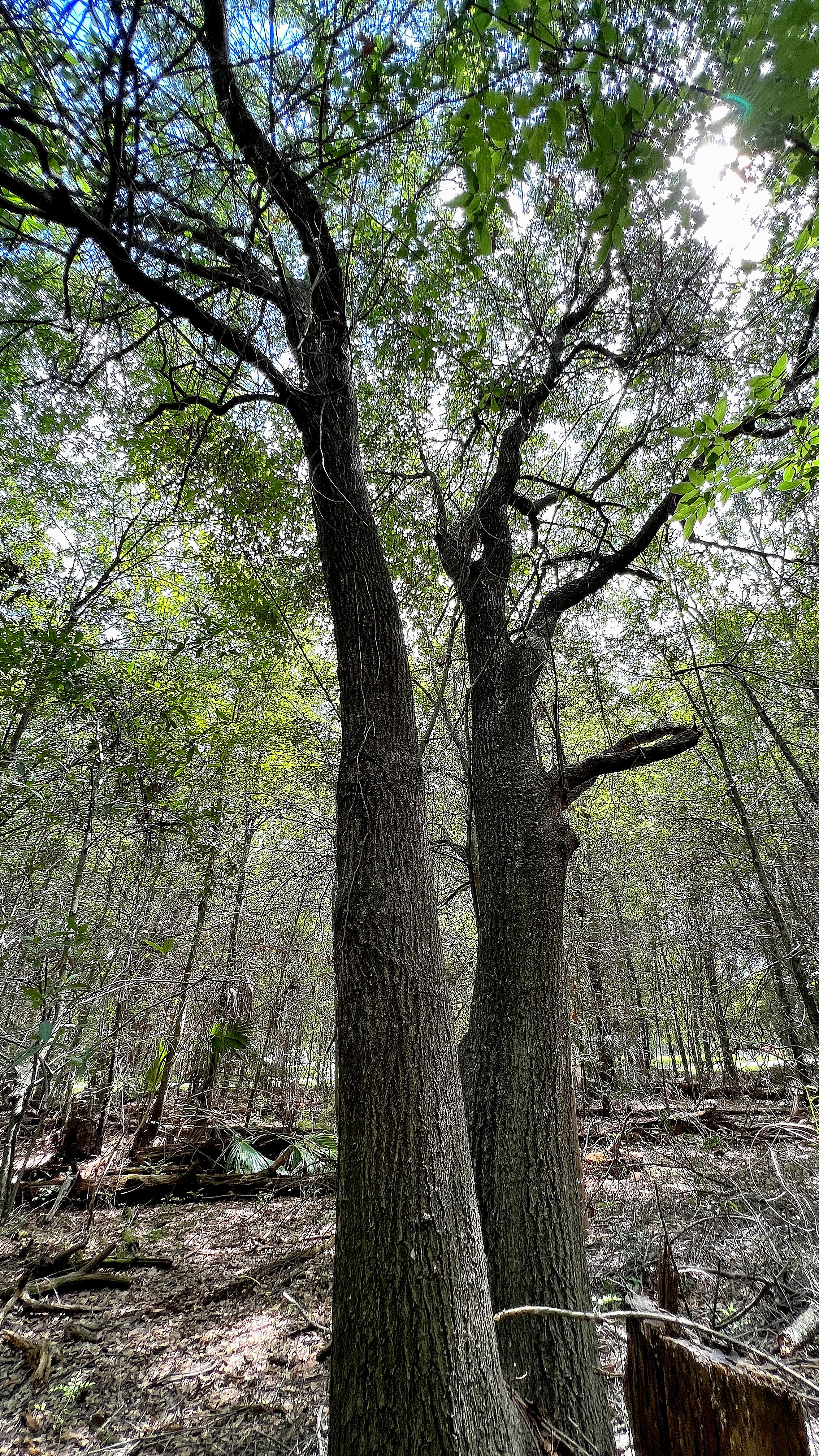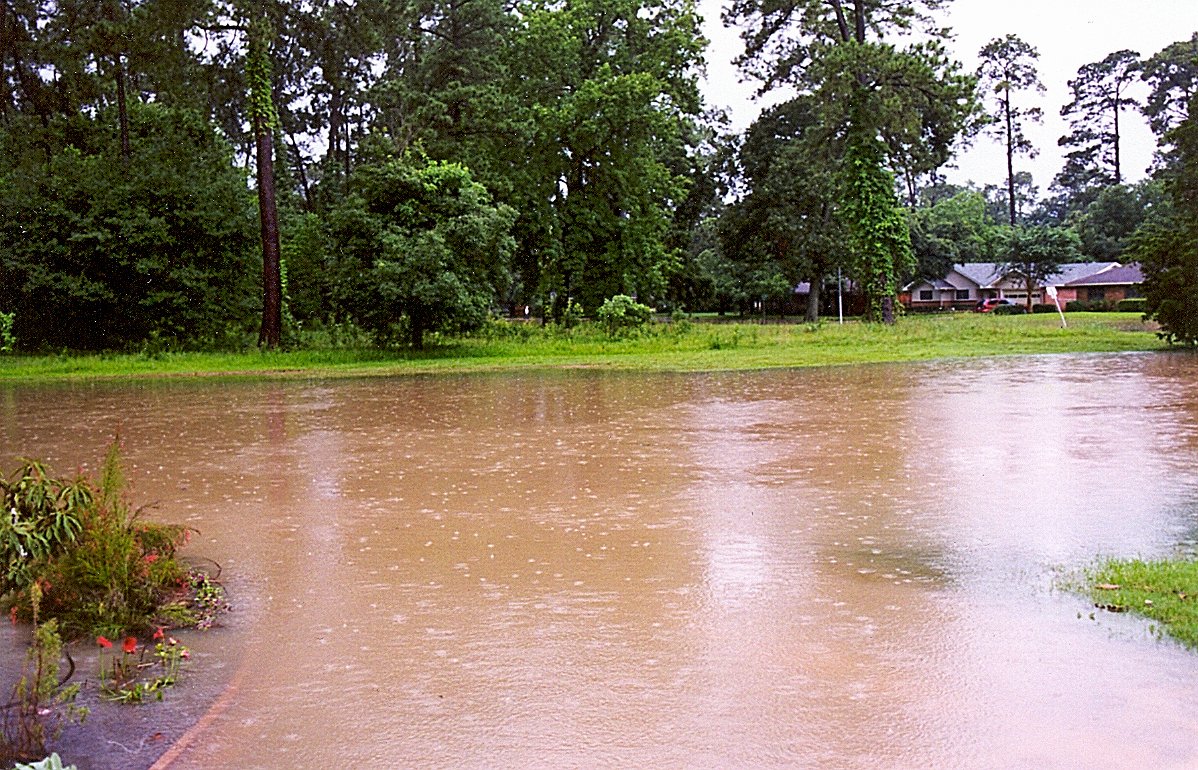Twin Water Oaks at LCNP.
Trees such as the large twin Water Oaks in front of you have many benefits. Here’s one you may not have thought of - trees actually influence the flow of rainwater, helping to protect against flooding and improve water quality in the urban environment. How do they do this?
Think about what happens to water during a heavy rain. If it falls on a surface like a concrete parking lot, all of the water quickly flows into a storm sewer. Not only does this increase the risk of flooding, but it also washes chemicals and litter from roads and parking lots into our bayous.
Now think about what happens to rain falling in a forest. In a process called vertical detention, the leaves, branches, and bark break the fall of the raindrops, slowing down their progress to the ground. A lot of the captured rainwater evaporates back into the air. The water that does reach the ground is more likely to sink in and less likely to run away, because the tree’s roots make the soil more porous. These same roots move water up from the soil and into the leaves, where it eventually comes out through tiny pores on the underside of the leaves and evaporates into the air.
Wister Lane during Harvey flood.
What does this all add up to? A big tree like each of these can soak up as much as 140 gallons of water a day through its roots! There is over 1,200 trees this size or larger in The Lorraine Cherry Nature Preserve. That adds up to 168,000 gallons of water a day, and that’s not even considering the thousands of smaller trees, not to mention the water that’s absorbed into the ground and the water that evaporates from the leaves and branches. That’s quite a benefit!
When hurricanes produce large amounts of rainfall, like Hurricane Harvey did in 2017, we need places like this nature preserve to not only help capture the water, but also to mitigate the flow of the water.
Flooding on Wister Lane during Allison.
Flooding on Wister Lane during Allison.
Flooding on Wister Lane during Allison.
Flooding on Wister Lane during Allison.






